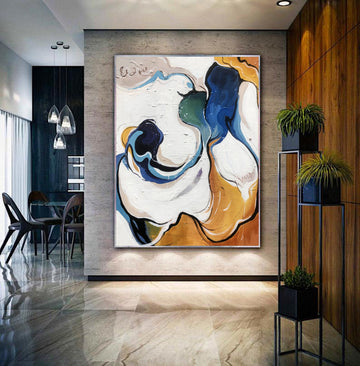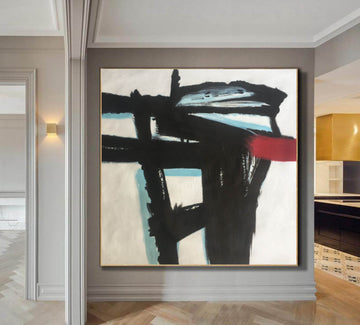The Origins of Contemporary Wall Art: A Historical Overview
Contemporary wall art has become increasingly popular in recent years, with artists from around the world creating stunning works that push the boundaries of traditional art forms. From abstract paintings to mixed media installations, contemporary wall art has become a staple of modern home decor. In this essay, we will explore the origins of contemporary wall art, tracing its roots from the early 20th century to the present day.

Early Origins of Contemporary Wall Art
The early 20th century was a time of great change in the art world. Artists were experimenting with new styles and techniques, moving away from traditional forms of painting and sculpture. This period saw the emergence of abstract art, which rejected the idea of representing the physical world and instead focused on the emotions and ideas behind the artwork.

One of the pioneers of abstract art was Wassily Kandinsky, a Russian painter who believed that art should be a spiritual experience. His early works were filled with vibrant colors and bold geometric shapes, creating a sense of movement and energy that was revolutionary at the time. Kandinsky's work laid the foundation for the abstract expressionist movement, which emerged in the United States in the 1940s and 1950s.
The Rise of Contemporary Wall Art
Contemporary wall art began to take shape in the 1960s and 1970s, as artists began to experiment with new materials and techniques. This period saw the emergence of minimalism, a movement that emphasized simplicity and understated elegance. Artists like Donald Judd and Dan Flavin created large-scale installations using industrial materials like steel and fluorescent lights, creating a sense of space and light that was both awe-inspiring and minimalist.
Another major influence on contemporary wall art was pop art, a movement that emerged in the 1950s and 1960s. Pop art rejected the highbrow nature of traditional art and instead focused on the popular culture of the time. Artists like Andy Warhol and Roy Lichtenstein created works that featured everyday objects and images, transforming them into high art.
Contemporary Wall Art Today
Today, contemporary wall art is a diverse and vibrant field, with artists from around the world creating works that reflect their unique perspectives and experiences. From street art to digital art, contemporary wall art encompasses a wide range of styles and techniques.
One of the most exciting developments in contemporary wall art is the use of new technologies like augmented reality and virtual reality. These technologies allow artists to create immersive experiences that blur the boundaries between art and reality. For example, the artist KAWS recently created an augmented reality installation that allowed viewers to interact with his artwork using their smartphones.
Client Comments on Contemporary Wall Art
Here are some comments from clients who have incorporated contemporary wall art into their home decor:
-
"I love how contemporary wall art adds a sense of energy and excitement to my living room. It's a conversation starter and really makes the space feel unique." - Emily B.
-
"Contemporary wall art is the perfect way to showcase my personal style. I love how there are so many different styles and techniques to choose from." - Michael K.
-
"I was hesitant to invest in contemporary wall art at first, but it has become one of my favorite aspects of my home decor. It adds a sense of sophistication and elegance that I didn't have before." - Lisa M.
Conclusion
Contemporary wall art has a rich and fascinating history, tracing its roots from the early pioneers of abstract art to the diverse and vibrant field of today. With artists from around the world pushing the boundaries of traditional art forms, contemporary wall art has become a staple of modern home decor. By incorporating this type of art into your home design, you can create a space that is both visually appealing and personalized.
